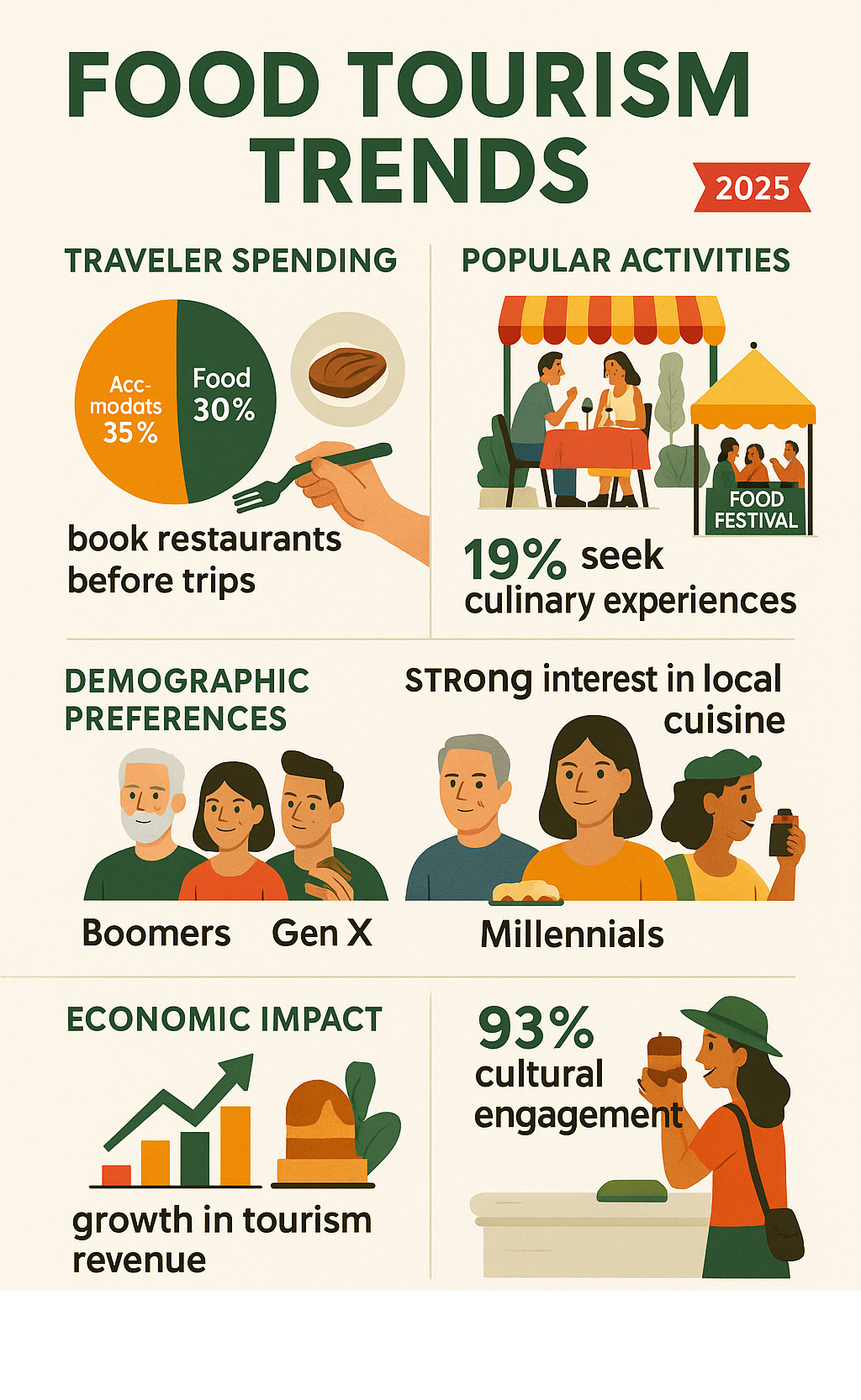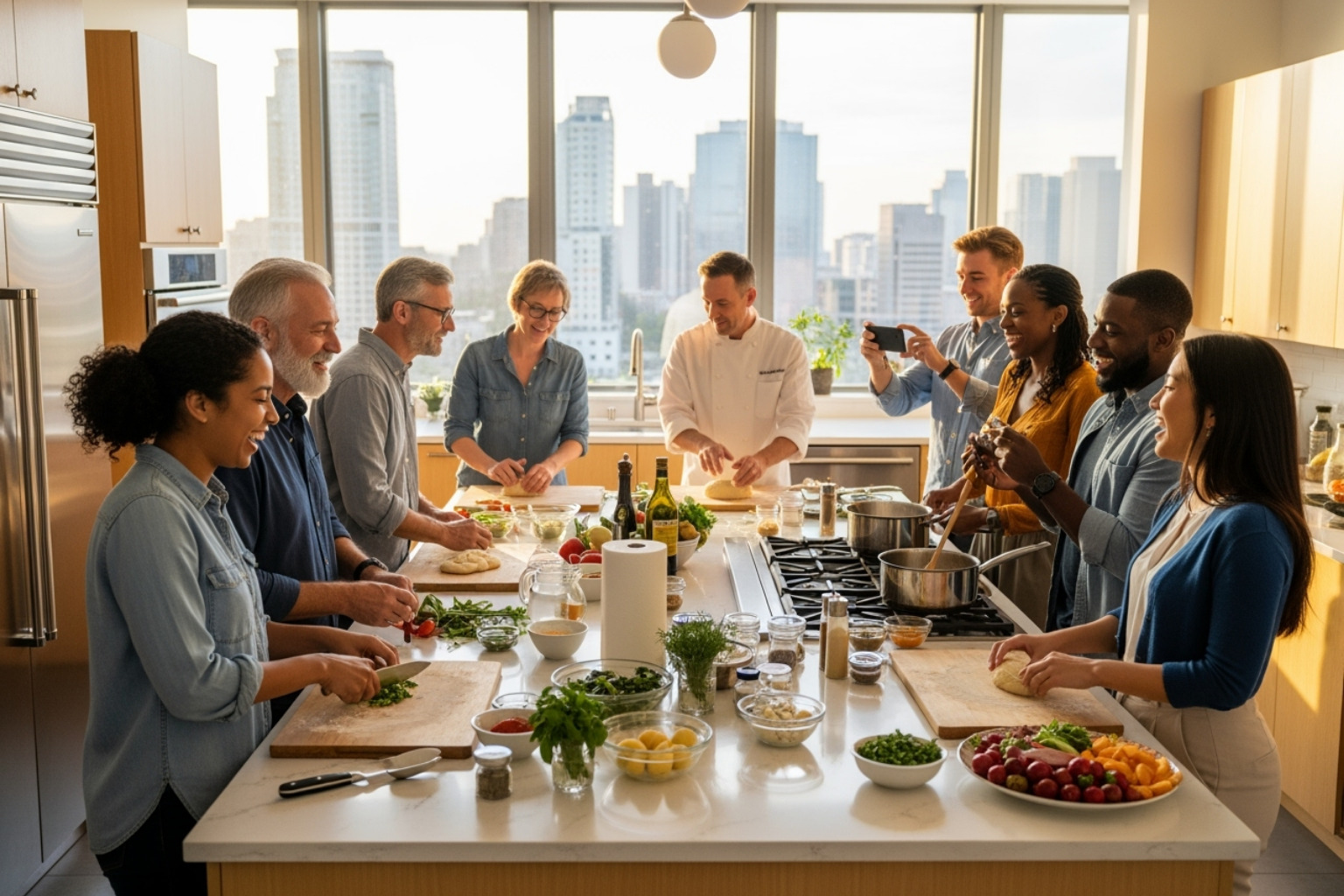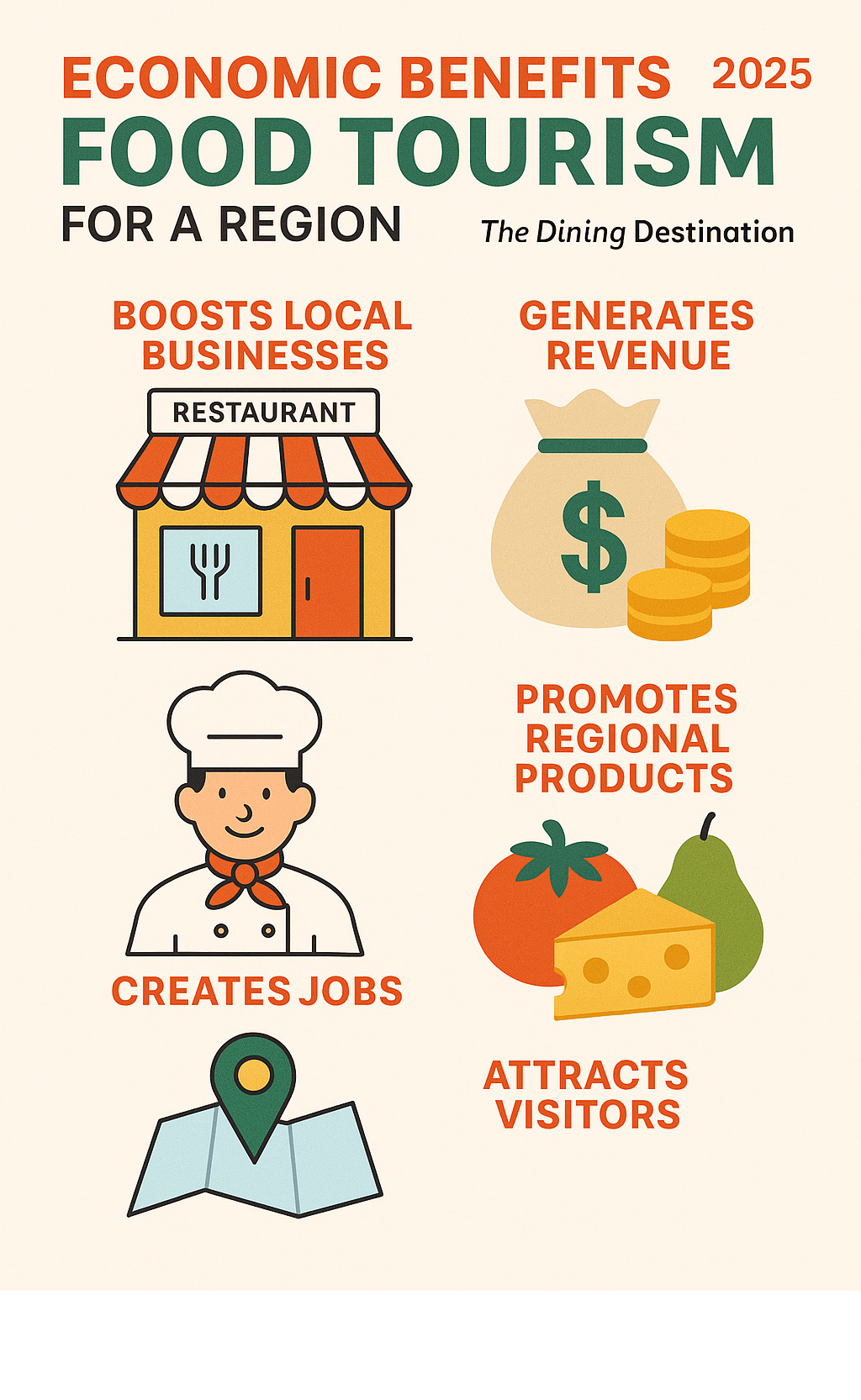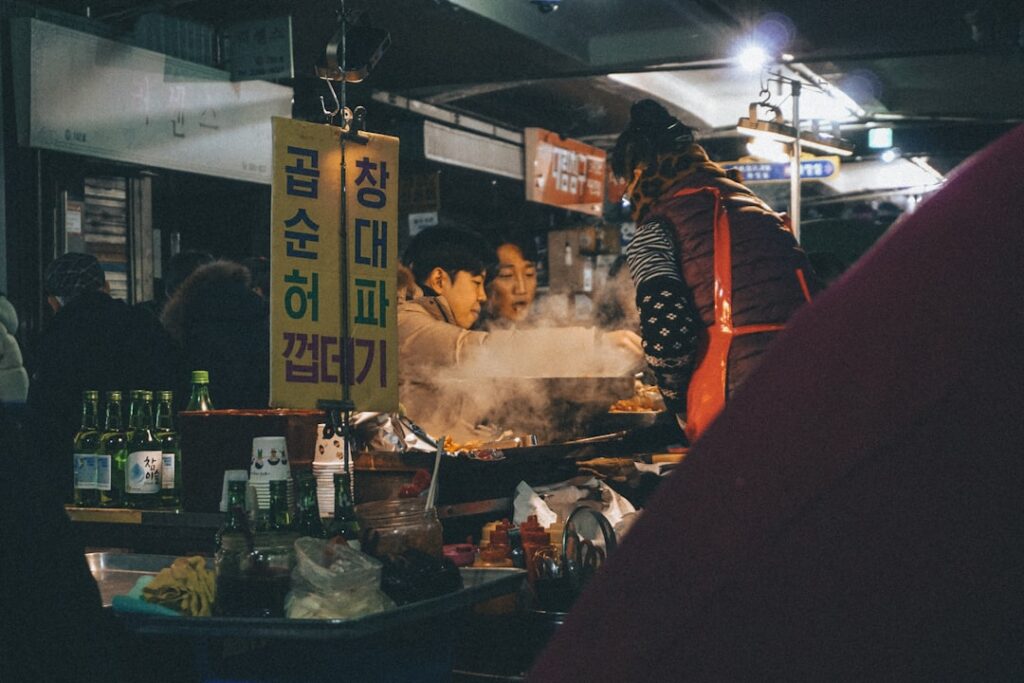Why Food Tourism Trends Are Reshaping How We Travel
Food tourism trends are reshaping global exploration, with dining now the second-highest travel budget priority after lodging. Travelers are no longer just visiting destinations—they’re tasting them, making food a primary lens for experiencing new cultures.
Key trends for 2025 include planning trips around restaurant reservations, seeking unique culinary experiences, and a focus on sustainability and health-conscious options. This shift is significant: food tourism is projected to be luxury travel’s fastest-growing segment, with a 7.6% growth rate from 2024-2030. It’s about cultural immersion and authentic connections, from Tokyo’s street markets to Tuscan cooking classes. The hospitality industry is responding by partnering with chefs and hosting food festivals, leveraging culinary heritage from Singapore to New York to attract a new wave of travelers.

Food tourism trends vocab explained:
The Rise of the Culinary Traveler: Understanding the Phenomenon

When you taste authentic mole in Oaxaca or ramen in Tokyo, you’re connecting with culture and tradition. This is the heart of the food tourism trends reshaping global travel. The World Food Travel Association defines food tourism as “traveling for a taste of place in order to get a sense of place.” It’s a move from simple sightseeing to “sight-tasting,” craving authentic experiences that engage all senses.
The economic impact is significant. Food tourists spend about 25% of their travel budget on culinary experiences, and 82% spend more on food while traveling than at home, supporting local farmers, artisans, and restaurants. For destinations like New York, Paris, and Tokyo, this fosters vibrant economies and stronger cultural identities.
Who Are the Food Tourists?
Food tourism attracts a diverse crowd:
- The Gastronaut: Seeks Michelin-starred meals and fine local delicacies.
- The Novelty Seeker: Hunts for unusual flavors and hole-in-the-wall spots.
- The Culture Vulture: Uses food as a passport to local traditions, joining cooking classes and visiting markets.
- The Familiarity Foodie: Enjoys local flavors but also seeks comforting, familiar options.
This appeal crosses generations, with Gen Z and Boomers budgeting the most for food, and Millennials drawn to unique bar and dining scenes. In our featured destinations, authentic eats are everywhere—from Queens’ global cuisines in New York to Oaxaca’s market workshops and Tuscany’s farm-to-table experiences.
Why Food is the New Destination
Food offers complete cultural immersion in a way no museum can. Every dish tells a story of history and local values, creating genuine pride and helping preserve culinary heritage. This connection is powerful, ensuring traditional recipes and techniques survive. The global exchange also inspires local menus, creating exciting fusions that keep culinary scenes in cities like Singapore vibrant. Food tourism creates lasting emotional connections, turning a great meal into a cherished travel story.
What’s on the Menu? Key Food Tourism Trends for 2025
Looking to 2025, culinary travel is about immersive, meaningful experiences. These emerging food tourism trends are reshaping menus and itineraries. Experiential dining is now a full sensory journey, with multisensory meals and virtual reality enhancing taste. Hyperlocal sourcing has an 85% adoption rate, with ingredients coming directly from local farms. Plant-based options are mainstream, with 25% of Americans preferring them. Another trend is mindful drinking, or “Tempo Drinking,” which emphasizes quality over quantity and sophisticated non-alcoholic options. The hospitality industry is capitalizing on these trends by partnering with local chefs, hosting festivals, and creating custom culinary packages in destinations from Tuscany to Singapore.
Sustainability and Hyperlocal Sourcing
Sustainability is a paramount movement in food tourism. The farm-to-table concept has evolved to include zero-waste kitchens (72% adoption) and regenerative agriculture (68% adoption). These practices minimize environmental impact and support healthy ecosystems. Choosing locally-sourced food in New York City supports regional farmers, while in Oaxaca, it helps preserve indigenous ingredients. This commitment reinforces culinary traditions in Paris, protects the integrity of products in Tuscany, and connects you to seasonal produce in Tokyo. With 63% of millennials seeking socially responsible restaurants, the demand for sustainability is clear.
Wellness, Health, and Mindful Consumption
Wellness is increasingly woven into culinary travel. Travelers seek health-conscious menu items, and the demand for plant-based and vegan options continues to soar. “Tempo Drinking” reflects a broader shift toward mindful consumption, with low-ABV and “Free-Spirited” beverages gaining popularity. The field of neurogastronomy, which explores how food impacts mood, is also influencing wellness retreats, with menus designed to boost mental clarity. This holistic approach combines eating well, feeling good, and protecting the planet.
The Rise of ‘Newstalgia’ and Budget-Conscious Luxury
Two key food tourism trends are ‘newstalgia’ and budget-conscious luxury. ‘Newstalgia’ gives beloved comfort foods a modern twist, like gourmet street food or “tipsy tea parties.” It appeals to our desire for both the familiar and the novel. Meanwhile, budget-conscious luxury makes high-end dining more accessible. Travelers can enjoy Michelin-starred quality through more affordable lunch menus or bar tastings. Gourmet food tours and small group cooking classes also offer high-value experiences for a fraction of the cost of a private chef, making luxury culinary travel attainable for more people.
The Digital Influence: How Tech and Social Media Shape Our Plates
Technology and social media are pivotal in shaping modern food tourism trends. Platforms like TikTok (very high influence) and Instagram (high influence) drive culinary travel decisions with compelling visuals and viral content. Hashtags like #travelforfood and #foodtourism create a global community of culinary explorers. Food TV shows, from Anthony Bourdain’s Parts Unknown to Chef’s Table, have also sparked widespread curiosity in global cuisines. Now, technology is advancing further with AI-driven travel planning, which can curate personalized gastronomic itineraries for trips to Paris or New York based on individual preferences. A single stunning photo can put a restaurant on the map. At The Dining Destination, our digital guides and resources are designed to be the essential companion for planning your next culinary trip.
The Business of Flavor: Industry Impact and Leading Destinations

The rise of food tourism trends is a powerful economic engine. In the hospitality sector, excellent on-site dining is now a priority for 60% of luxury travelers. Hotels are forging partnerships with local chefs and hosting culinary festivals to create unique, marketable experiences. These strategies, from pasta-making classes in a Tuscan hotel to chef-hosted dinners in New York City, justify premium pricing and drive word-of-mouth. While food tourists can bring a 25% added economic benefit to a destination, popularity has its challenges. Over-tourism can strain resources and commercialize authentic culture. However, the benefits of a strong culinary reputation, such as a significant business increase for Michelin-featured restaurants, often outweigh the risks.
Top Destinations for Luxury Culinary Travel
Discerning travelers flock to destinations that offer transformative culinary experiences:
- New York City: A global powerhouse with an changing fine dining scene and dozens of Michelin-starred restaurants.
- Oaxaca, Mexico: Offers deep cultural immersion with its seven moles, traditional chocolate-making, and mezcal distilleries.
- Paris, France: The homeland of fine dining, boasting iconic gastronomic traditions and a key role in a country with 625 Michelin-starred restaurants.
- Tuscany, Italy: Combines rustic charm with refined elegance, from garden-to-table cooking classes to Chianti wine tours.
- Tokyo, Japan: A city of culinary precision, offering everything from high-end sushi to perfect ramen bowls.
- Singapore: A unique melting pot where Michelin-starred street food coexists with ultra-luxury dining.
Prestigious guides like Michelin act as a powerful magnet for luxury travelers in these food-centric locales.
Future Predictions for Food Tourism Trends
The future of food tourism is bright, with luxury food tourism projected to grow at a CAGR of 7.6% between 2024 and 2030. We anticipate a deeper integration of culinary travel with wellness retreats, focusing on nourishing body and soul. The rise of culinary co-living spaces for digital nomads and the inclusion of food tours in bleisure travel (blending business and leisure) are other key developments. In our featured destinations, expect continued innovation in multisensory dining and AI-driven personalized itineraries, making culinary travel more connected and personal than ever.
Frequently Asked Questions about Food Tourism Trends
As food tourism trends continue to reshape how we explore the world, here are answers to common questions.
What is the most popular food tourism activity?
Visiting local restaurants is the top activity for over 50% of travelers. It’s the best way to find hidden gems in Tokyo or a neighborhood bistro in Paris. Other popular activities include food festivals (46%), local food tours (41%), and wine tastings (39%). These experiences, available in our featured destinations, offer an authentic taste of local culture.
How much of a travel budget is typically spent on food?
Travelers dedicate about 25% of their travel budget to food and beverage. Tellingly, 82% of travelers spend more on food while traveling than at home. This shows that food has evolved from a necessity to a primary motivation for travel, feeding our curiosity as much as our bodies.
What are some simple food tourism trends I can try on my next trip?
Getting started is easy. Exploring a local farmers’ market, like Union Square Greenmarket in New York, offers direct insight into a destination’s food culture. A Street Food Tour provides a safe, guided way to sample authentic eats. For a hands-on experience, a Local Cooking Class for Fun in Tuscany or Oaxaca creates skills and memories that last a lifetime.
Conclusion
The future of travel is flavorful, driven by food tourism trends that emphasize tasting a place, not just seeing it. Food is a universal bridge connecting us to cultures, histories, and communities. The Dining Destination is your guide to this delicious world, offering curated experiences and comprehensive guides to ensure your journey is as much about the plate as the place. Whether you’re dreaming of a Michelin-starred dinner in Paris, street food in Oaxaca, or a cooking class in Tuscany, we’re here to help you savor every bite. It’s time to pack your bags and ready your taste buds.
Ready to explore more about how you can travel for food? Click here!









